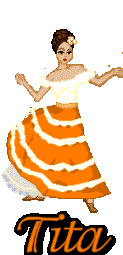|

La Plena
Puerto Rican music has been heavily
influenced by African rhythms.
The Bomba developed directly from
ritual slave dances. The Plena
is a blend of different cultures
but relies heavily on African tradition.
Both elements developed in those coastal
areas with a concentration
of African descendants.

Afro traits in Puerto Rican music include:
collective participation in which
there is no distinct line between musicians
and audience. Everyone is welcomed and
encouraged to participate. An emphasis
on rhythm and percussion rich in melody.
Widespread use of call and response.

La Plena Puertorriqueña developed in Ponce
approximately 100 years ago.
La Plena is also known as
"el periodico catao" (the sung newspaper)
because the songs are about currents issues.
Plena musicians often poke fun at mundane
everyday occurrences or the antics of politicians.

The Plena rhythm has strong African roots
but it is also influenced by other music
genres such as Taíno, jíbaro, danzas,
and other European styles.
Plena instruments include a large tambourine
like instrument called pandero.
A pandero is a very short drum that
looks like a tambourine without jingles,
and bigger in diameter than a tambourine.

The pandero was introduced in Spain by the
Moors Of particular importance are "classical"
Puerto Rican pieces such as "Temporal",
"Mamita Llego el Obispo", "La Bandera",
"Mataron a Elena", pieces from the early
period of the plena and pieces distinctively
interpreted by Rafael Cortijo with Ismael Rivera.





|
|